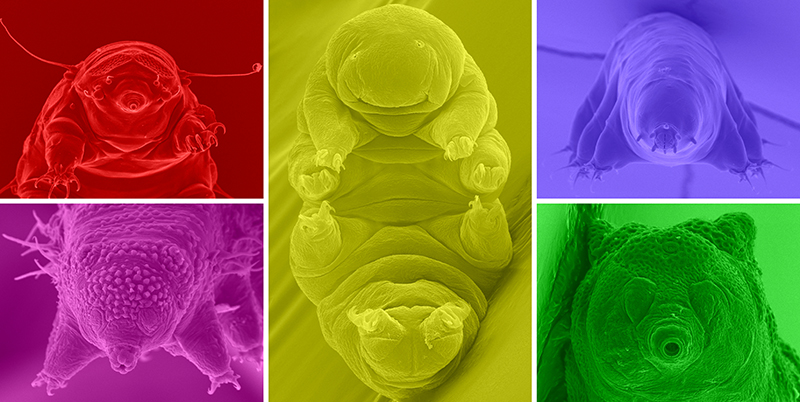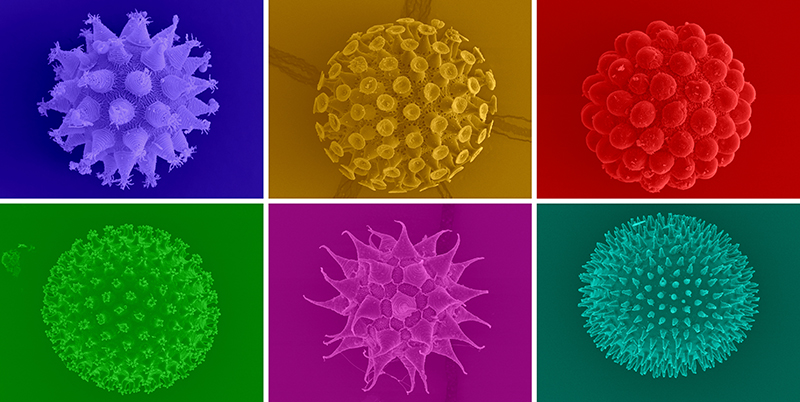- 00
days
- 00
hours
- 00
minutes
- 00
seconds
 Web Content Display
Web Content Display
15th International Symposium on Tardigrada
This August, tardigrade researchers and enthusiasts from all continents will come to the Royal City of Kraków to present and learn about the newest and unpublished discoveries concerning tardigrade taxonomy, systematics, phylogeny, biogeography, ecology, evolution, behaviour, reproduction, development, anatomy, physiology, astrobiology, molecular biology (all of the “omics”), and to hear about potential medical applications of the remarkable tardigrade abilities to survive extreme conditions.
The main theme of the Symposium will be the biology of tardigrades, lovingly known as water bears or moss piglets. These microscopic (usually well under 1 mm in length) animals can be found in a great range of ecosystems throughout Earth, from ocean floors to mountain tops and from the poles to the tropics. Tardigrades constitute a phylum within the megaclade Ecdysozoa (moulting animals), thus they are closely related to insects, velvet worms and round worms. To a wider public, tardigrades are known because of their remarkable cryptobiotic abilities that allow some of them to survive desiccation, freezing down almost to absolute zero and heating up to high temperatures, vacuum and high pressures, megadoses of ionising radiation, and even quantum entanglement or exposure to outer space. Water bears owe their worldwide fame also to their undeniable and irresistible cuteness – by all measures they are the most adorable of all microscopic animals – just look at their lovely faces and amazingly sculptured eggs! ♥
 Web Content Display
Web Content Display
© Łukasz Michalczyk, www.tardigrada.net, all rights reserved.
 Web Content Display
Web Content Display
The Symposium will be held at the Auditorium Maximum, a modern and spacious conference centre of the Jagiellonian University in Kraków, Poland. The Jagiellonian University, founded in 1364 and Alma Mater of Nicolas Copernicus, is the oldest university in Poland and one of the oldest functioning universities in the world. The JU’s home is Kraków, a millennium-old city and a medieval capital of Poland, located in the southern part of this central European country. Thus, apart from all the exciting tardigrade research that will be presented and discussed at the Symposium, participants will have an occasion to enjoy the charms of Kraków and its magical atmosphere, as well as to try Polish cuisine (savoury or sweet pierogi, barszcz, żurek, grilled kiełbasa, zapiekanki and many others!). We have prepared a number of various attractions for our guests: there will be a Welcome Reception flowed by an Icebreaker, visits to unique medieval architectural monuments and museums, including the oldest JU building, underground passages of the Main Square that reach down to the prehistoric times, and an excursion to the exceptional Wieliczka Salt Mine with sculptures and chandeliers carved from salt, as well as a banquet in an original setting. Finally, discoveries presented at the Symposium will be published in the Zoological Journal of the Linnean Society, one of the most respected zoological journals in the world. We will take utmost care to make the Symposium a safe event for everyone (more information on COVID-19 here). Thus, don’t miss this unique opportunity and register as soon as possible!
Although there is no formal tardigradological society that would be responsible for organising periodical meetings, international conferences dedicated exclusively to tardigrades are held regularly. So far, there have been fourteen tardigrade Symposia, each organised by different volunteer tardigradologists. Previous Symposia were held in Italy, USA, Germany, Denmark, Poland, Portugal and in the UK. On average, Symposia are held every three years and each congress is an extremely important event in our tardigrade world. The Symposia are rare occasions to meet in one place almost all tardigradologists, who, for most of the rest of the time, are scattered all over the globe.
 Web Content Display
Web Content Display
© Łukasz Michalczyk, www.tardigrada.net, all rights reserved.
 Web Content Display
Web Content Display
This is the second time that a tardigrade conference is held in Poland. The 2nd International Symposium on Tardigrada took place in 1977 and it was hosted by the late Professor Barbara Węglarska (1922–2020). The 15th Symposium was originally planned for 2021, but – due to the COVID-19 pandemic – it has been postponed to 2022. Thus, after 45 years, the Symposium comes back to Kraków and to the Jagiellonian University. In order to honour Professor Barbara Węglarska and her contribution to tardigrade science, both the Symposium and the Symposium Proceedings will be dedicated to her memory and legacy.
Stay tuned for Announcements, which are published on this website and are also circulated via the Tardigrada Newsletter Mailing List (if you haven't joined the TN Mailing List yet, you can do it here; please remember to add the email domains @tardigrada.net and @uj.edu.pl to your white list, so our messages don’t end up in your spam folder).
Last but not least, below is our Symposium logo, which depicts an individual of Doryphoribius dawkinsi stylised as the statue of the Wawel Dragon at the foot of the Wawel Hill in Kraków. Font and the outer flame colours represent the colours of the Jagiellonian University coat of arms. Concept and design: Łukasz Michalczyk, artwork: Kamil Janelt (University of Silesia) & Łukasz Michalczyk (Jagiellonian University):
 Web Content Display
Web Content Display
 Web Content Display
Web Content Display
Additionally, in this section you will find further basic information on the Symposium, such as up-to-date news in the form of Announcements, see who our Plenary Speakers are, find out who’s behind all this stir, where the best presentations are going to be published, who supported us financially (and how you can become a sponsor too!), as well as who has graced us with their patronage:

